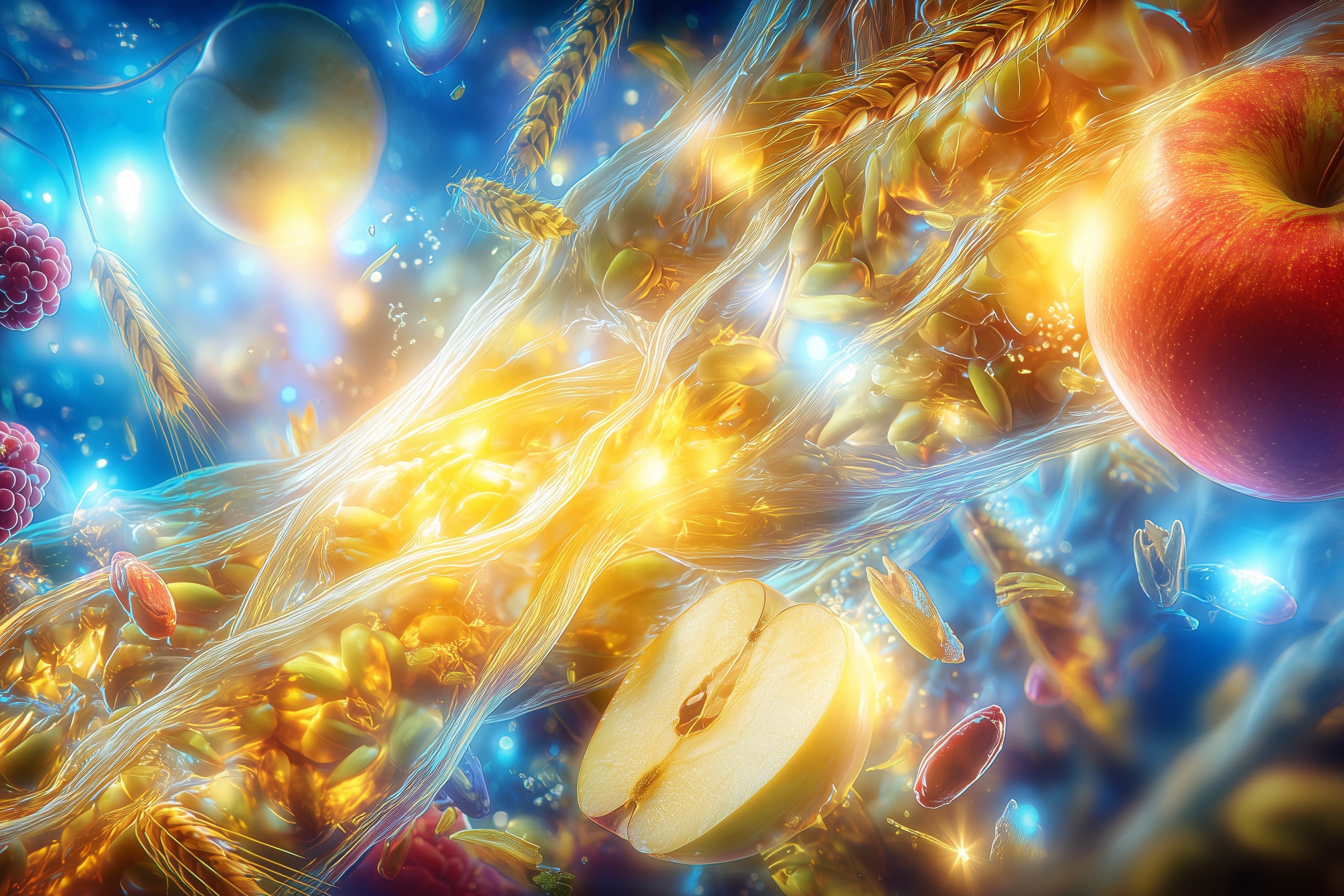The vaginal microbiome
In recent years, interest in our microbiome has grown enormously. Not only science, but also the general public is becoming increasingly interested in the effects that the smallest living beings have on our well-being. However, people often only think of the intestine – which is not surprising, since the majority of our little helpers are located there. However, it should not be forgotten that this is not the only place where microorganisms are important. But also in an equally densely populated area, where about 9% of all bacteria of the woman are located – the vagina.
Dynamic vaginal flora
The vaginal flora, i.e. the composition of the microbes in the female vagina, the so-called vaginal microbiome, is a dynamic construct. It changes several times in the course of our lives and there can also be major differences between people and ethnic groups in particular. Nevertheless, the microbiome in our vagina is more stable than in other areas, such as the oral cavity, intestine or the largest human organ, the skin.
Our vaginal flora is usually dominated by one or more species of lactobacilli. These lactic acid bacteria are rod-shaped bacteria that produce the lactic acid that gives them their name.
Protection against pathogens through the vaginal microbiome
Bacteria usually live in a mutualistic relationship with humans. This means that both partners benefit from living together. In the case of lactobacilli, we give them a home and provide them with nutrients and they protect us from disease-causing microorganisms – the so-called pathogens. These include Bacteria (such as Neisseria gonorrhoeae – the trigger of gonorrhea), viruses (e.g. HIV) and parasites (e.g. Trichomonas vaginalis).
But how do lactobacilli protect us from these pathogens?
On the one hand, lactobacilli produce lactic acid by metabolizing glucose. This lowers the pH value in the vagina to around 3.5 – 4.5. This acidic environment strengthens the protective flora and prevents the growth of many pathogens that require a different pH optimum.
On the other hand, many lactobacilli produce so-called bacteriocins. Bacteriocins are proteins that are released by microorganisms to prevent the growth of other microorganisms. In addition, some types of lactobacilli produce hydrogen peroxide, which also has an antimicrobial and therefore positive effect on the protective flora.

Risks of dysbiosis
But what happens when this system goes haywire? Almost 30% of the US female population suffers from bacterial vaginosis. This reduces the proportion of important lactobacilli, allowing other facultative and anaerobic microorganisms to multiply due to the changed pH conditions. The balance of the microbiota is disturbed. This can usually be recognized by symptoms such as strange smelling discharge, burning when urinating and itching around and outside the vagina.
Bacterial vaginosis is associated with various risks. On the one hand, women become more susceptible to sexually transmitted diseases such as HIV or chlamydia. In pregnant women, the disturbed microbial balance can lead to premature birth or low birth weight. There are also studies that suggest a connection between disturbed vaginal flora, known as dysbiosis, and infertility. In addition to the physical problems, affected women often suffer from psychological stress as they are ashamed of the odor and therefore avoid sexual relationships.
What causes the imbalance?
The imbalance of the vaginal microbiome can be caused by various factors. Vaginal douches and perfumed soaps should be avoided at all costs, as they have a negative impact on the environmental conditions for the good microorganisms. But changing sexual partners, smoking and intrauterine devices (IUDs) also lead to an imbalance in the vaginal flora.
In the case of a disease and conventional treatment, half of the women with the disease have problems again in the following 12 months.
Treatment of bacterial vaginosis
Bacterial vaginosis is usually treated with antibiotics that are either taken orally or applied vaginally. However, these often have no lasting effect. However, the use of antibiotics is always a massive intervention in the microbiome and should be avoided wherever possible – not only because of increasing antibiotic resistance.
For this reason, more and more research is being carried out into probiotics to support natural vaginal flora. Probiotics are living microorganisms which, in sufficient quantities, are said to provide the host with health benefits. The following probiotic bacteria are often used individually or as a mixture: Lactobacillus acidophilus, Lactobacillus rhamnosus and Lactobacillus gasseri . However, there are also other mixtures.
They are often used in conjunction with antibiotic therapy for bacterial vaginosis. For the reasons mentioned above, however, antibiotics should only be used in exceptional cases. In the long term, more harm than good is being done here! The results of probiotics research seem promising and may reduce the risk of relapse.
The latter is usually the result of a decrease in diversity. The fewer different bacterial populations there are, the more vulnerable the delicate balance is. In the case of bacterial vaginosis, there is often a massive disturbance in the ratio of bacterial populations to one another. Even if the populations are subsequently re-established, tiny amounts of harmful bacteria remain, which can regain the upper hand more quickly than before if there is a further disturbance. Therefore, a reduction in symptoms is not necessarily an indication that the disease is over.
Taking responsibility for your own health
Therefore, the following also applies to bacterial vaginosis: prevention is better than cure. Probably the simplest method of prevention is to reduce the risk factors mentioned above, for example to stop smoking or to avoid vaginal douches and perfumed soaps. But diet also seems to have an influence. A deficiency of the micronutrients vitamins A, C, E and D, beta-carotene, folic acid and calcium can lead to an imbalance of the microorganisms.
Curiously, two diets appear to have a positive effect on the health of the vaginal microbiome that are otherwise not associated with a positive effect on “good” bacteria. A diet rich in animal starch and a diet high in fat and low in fiber can, in principle, promote the preservation of natural vaginal flora. The decisive factor here is the glycogen content in the vagina. Glycogen is a multiple sugar that is made up of several glucose molecules. It serves as an energy store for humans and animals.
If the glycogen content in the female vagina is high, the lactobacilli have a constant supply of food that they can metabolize and use to multiply. More animal starch most likely leads directly to an increase in glycogen in the vagina. Fat, on the other hand, leads to higher oestrogen levels in the body. Among other things, this hormone is responsible for transporting free glycogen into the epithelial cells of the vagina, i.e. the inner lining of the vagina. As a result, the lactobacilli have increased access to the sugar store as a source of nutrients.

Effects of the pill on the vaginal flora
The contraceptive pill can also have an influence on the vaginal microbiome. In Germany, around half of women take the contraceptive pill. This puts it in first place among the most popular contraceptives, even though it is a drug that interferes intensively with the hormone balance and can have massive side effects. These include, for example, migraines, depressive moods, reduced libido and an increased risk of thrombosis.
The pill can have various effects on the vaginal microflora. One potentially positive effect is the estrogen-induced accumulation of glycogen in the vagina and the resulting support for the growth of lactobacilli.
On the other hand, the growth of Candida albicans can also be promoted. This yeast is found in the majority of people and is normally harmless in small numbers. Among other things, it is kept under control by the lactobacilli and the human immune system. However, under certain circumstances, increased growth of Candida albicans can lead to vaginal candidiasis. In addition to a weakened immune system, this can also be caused by taking the contraceptive pill. The increased amount of glycogen caused by the contraceptive pill also provides the sugar-loving yeast fungi with more food. Taking the medication also promotes the adhesion of the fungi in the vagina. In addition, the natural protection of the vagina’s immune system against yeast fungi appears to deteriorate. Under certain circumstances, taking the medication can prevent bacterial vaginosis, but instead promote vaginal candidiasis.
The vaginal flora should be protected
A diverse vaginal flora is a highly effective protection against pathogenic bacteria. However, the balance must not be destroyed. De-stabilization makes women susceptible to sexually transmitted diseases and, in the worst case, can lead to infertility. It is necessary to take responsibility for your own health and not to jeopardize the natural state of the vaginal microbiome, but to support it with the right micronutrients. Probiotics can also be helpful under certain circumstances. (LS)
___________________________
Sources:
Bagnall P, Rizzolo D. Bacterial vaginosis: A practical review. JAAPA. 2017 Dec;30(12):15-21. doi: 10.1097/01.JAA.0000526770.60197.fa. PMID: 29135564.
García-Velasco JA, Menabrito M, Catalán IB. What fertility specialists should know about the vaginal microbiome: a review. Reprod Biomed Online. 2017 Jul;35(1):103-112. doi: 10.1016/j.rbmo.2017.04.005. Epub 2017 Apr 19. PMID: 28479120.
Gonçalves B, Ferreira C, Alves CT, Henriques M, Azeredo J, Silva S. Vulvovaginal candidiasis: Epidemiology, microbiology and risk factors. Crit Rev Microbiol. 2016 Nov;42(6):905-27. doi: 10.3109/1040841X.2015.1091805. Epub 2015 Dec 21. PMID: 26690853.
Saraf VS, Sheikh SA, Ahmad A, Gillevet PM, Bokhari H, Javed S. Vaginal microbiome: normalcy vs dysbiosis. Arch Microbiol. 2021 Sep;203(7):3793-3802. doi: 10.1007/s00203-021-02414-3. Epub 2021 Jun 13. PMID: 34120200.



